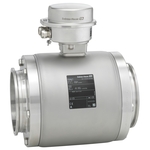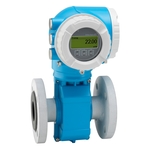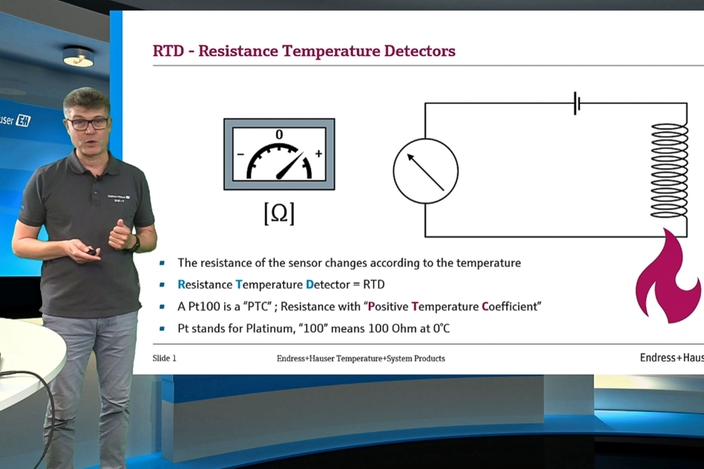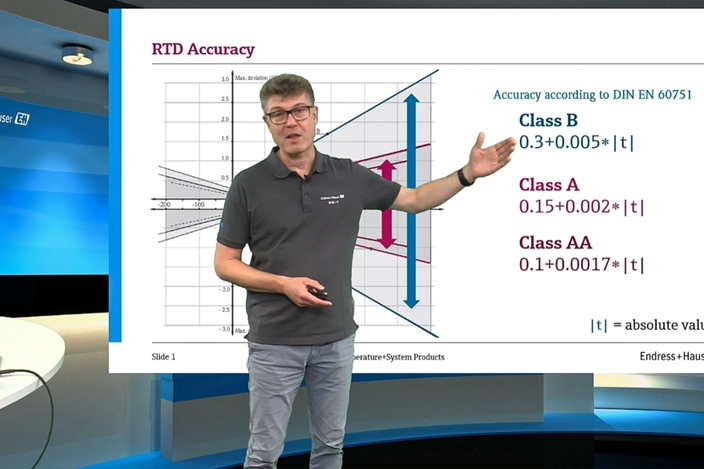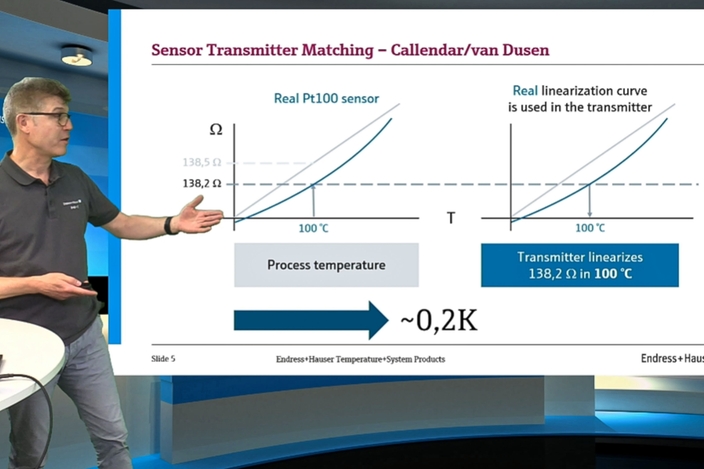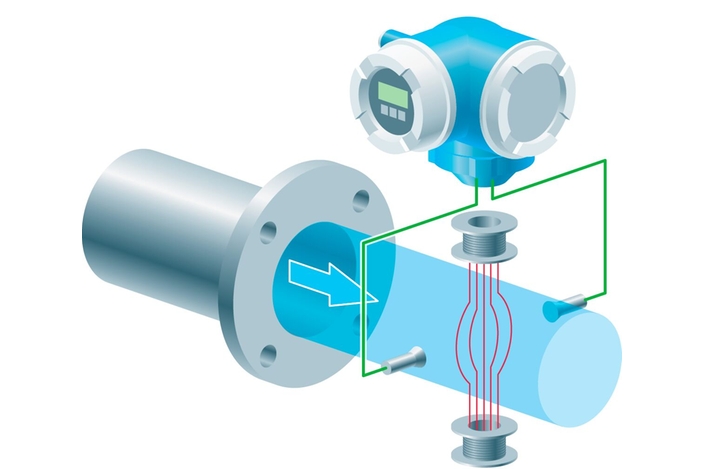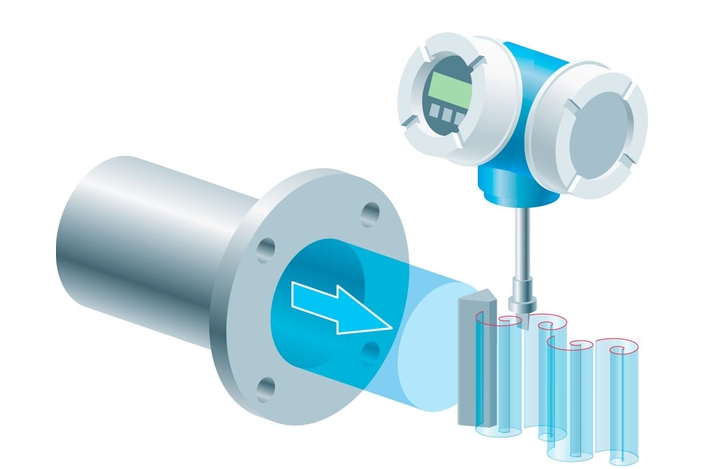Faraday’s law of induction states that a metal rod moving in a magnetic field induces electrical voltage. This dynamo principle also governs the way electromagnetic flowmeters work.
As soon as the electrically charged particles in a fluid cross the artificial magnetic field generated by two field coils, an electric voltage is induced. This voltage, tapped by two measuring electrodes, is directly proportional to the velocity of flow and thus to the flow volume. The magnetic field is generated by a pulsed direct current with alternating polarity. This ensures a stable zero point and makes the flow measurement insensitive to multiphase or inhomogeneous liquids, as well as low conductivity.
Watch the video to learn how the electromagnetic flow measuring principle works and read more about it here!
Advantages of electromagnetic flowmeters at a glance
- The measuring principle is virtually independent of pressure, density, temperature and viscosity
- Even fluids with entrained solids can be metered, e.g., ore slurry or cellulose pulp
- Wide range of nominal diameters: DN 2 to 3000 (1/12 to 120")
- Free pipe cross-section: CIP/SIP cleanable, piggable
- No moving parts
- Minimum outlay for maintenance and upkeep
- No pressure losses
- Very high turndown up to 1000:1
- High degree of measuring reproducibility and long-term stability
The most diverse substances are transported and distributed in piping systems every single day. This may include drinking water, fruit juices, chemicals or even slurries containing stones.
The fluids flowing through pipes often have completely different properties. Consequently, there are different principles for their measurement.
One method is flow measurement based on the electromagnetic principle.
The basic physics of this principle can be traced back to the English physicist Michael Faraday, who – in 1831 – discovered that electrical current can be generated with a magnetic field.
Roughly 100 years later, the Swiss inventor and priest Father Bonaventura Thürlemann applied this knowledge to electrically conductive liquids flowing in pipes and built the world’s first electromagnetic flowmeter.
Let’s take a closer look at how this measurement method works!
Two field coils are located inside each electromagnetic flowmeter. With the help of what are termed pole shoes, these coils generate a constant magnetic field over the entire cross-section of the measuring tube.
Two electrodes, which can pick up electrical voltages, are installed at a right angle in the wall of the tube.
The lining fitted on the inside wall prevents electrical short circuits between the conductive liquid and the metallic tube.
If there is no liquid flow, no induced electrical voltage is measured at first between the two electrodes.
The electrically charged particles of the conductive liquid are evenly distributed – shown here in drinking water with red and blue particles.
However, as soon as the liquid starts to flow in the measuring tube, the magnetic field applies a force to the charged particles.
As a result, the positively and negatively charged particles in the liquid are separated and collect on the opposite sides of the tube wall.
Now, an electrical voltage forms that is detected and measured by the two electrodes.
This voltage is directly proportional to the flow velocity in the pipeline.
Together with the known tube cross-section, the actual flow volume can then be calculated.
The greater the flow velocity – and thus the separation of the charged particles – the greater the electrical voltage between the electrodes.
The electrodes also detect what is called “interference voltage” which has to be separated from the actual measuring signal.
One method that has been successfully used for this purpose is to create the magnetic field with a pulsed direct current.
To do so, the polarity of the magnetic field is alternately reversed – illustrated here in slow motion.
The voltage picked up on the measuring electrodes now constantly changes in polarity.
As a result, all constant interference voltages can be eliminated – for example, electrochemical effects in the liquid or external electromagnetic fields.
Thus, the size of such interference voltages has no impact whatsoever on the actual measuring signal. The advantages of this are a stable measurement and a stable system zero point.
With an installed base of over 1 million electromagnetic flowmeters, Endress+Hauser has stood for flow expertise and superb product quality for over 30 years.
In other words: high accuracy, easy installation and absolute reliability.
For all applications, we have the right solution.
Endress+Hauser - your single-source supplier for measurement technology!

%20with%20flange%20connections%20for%20process%20applications%20-%20PP01.jpg)

